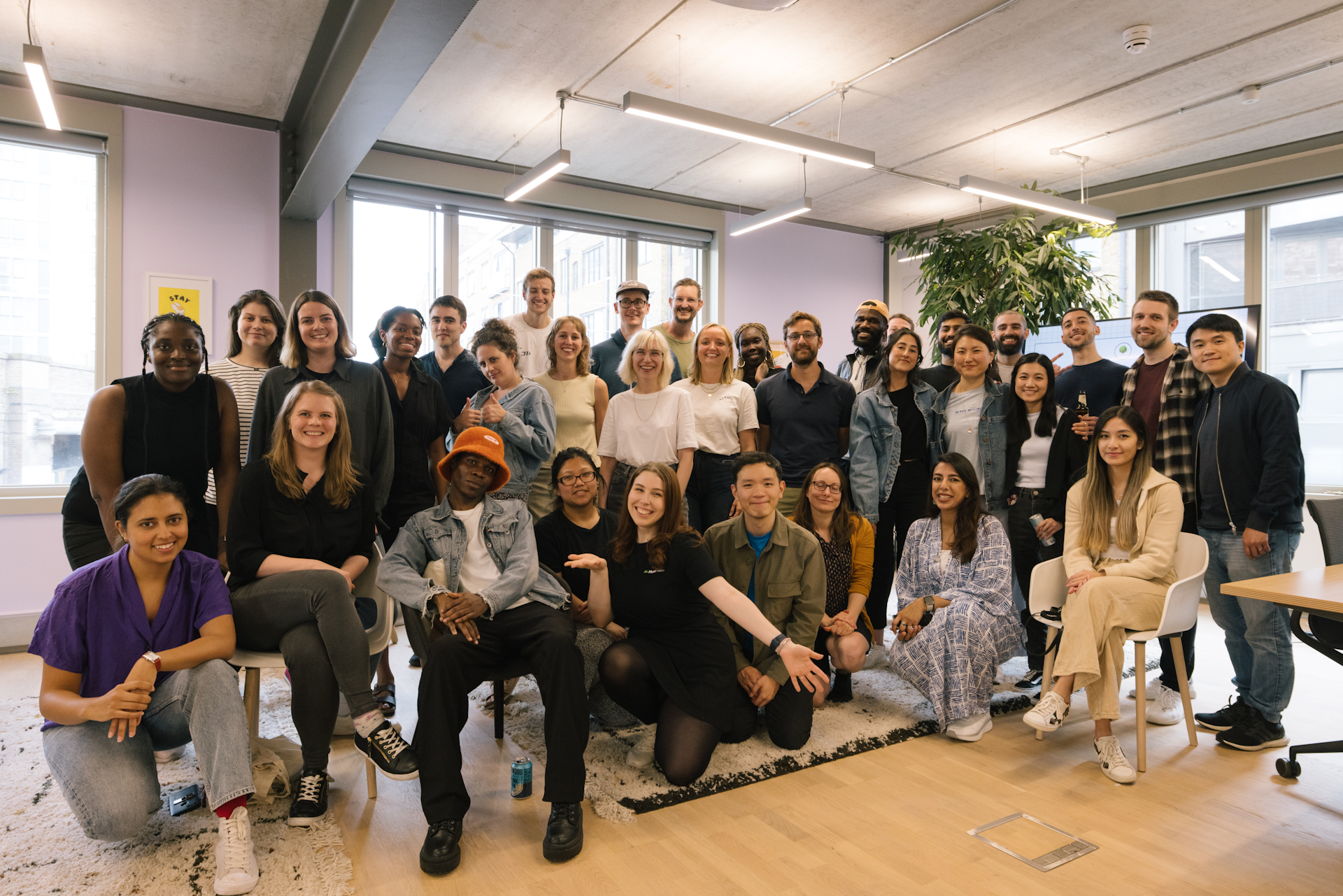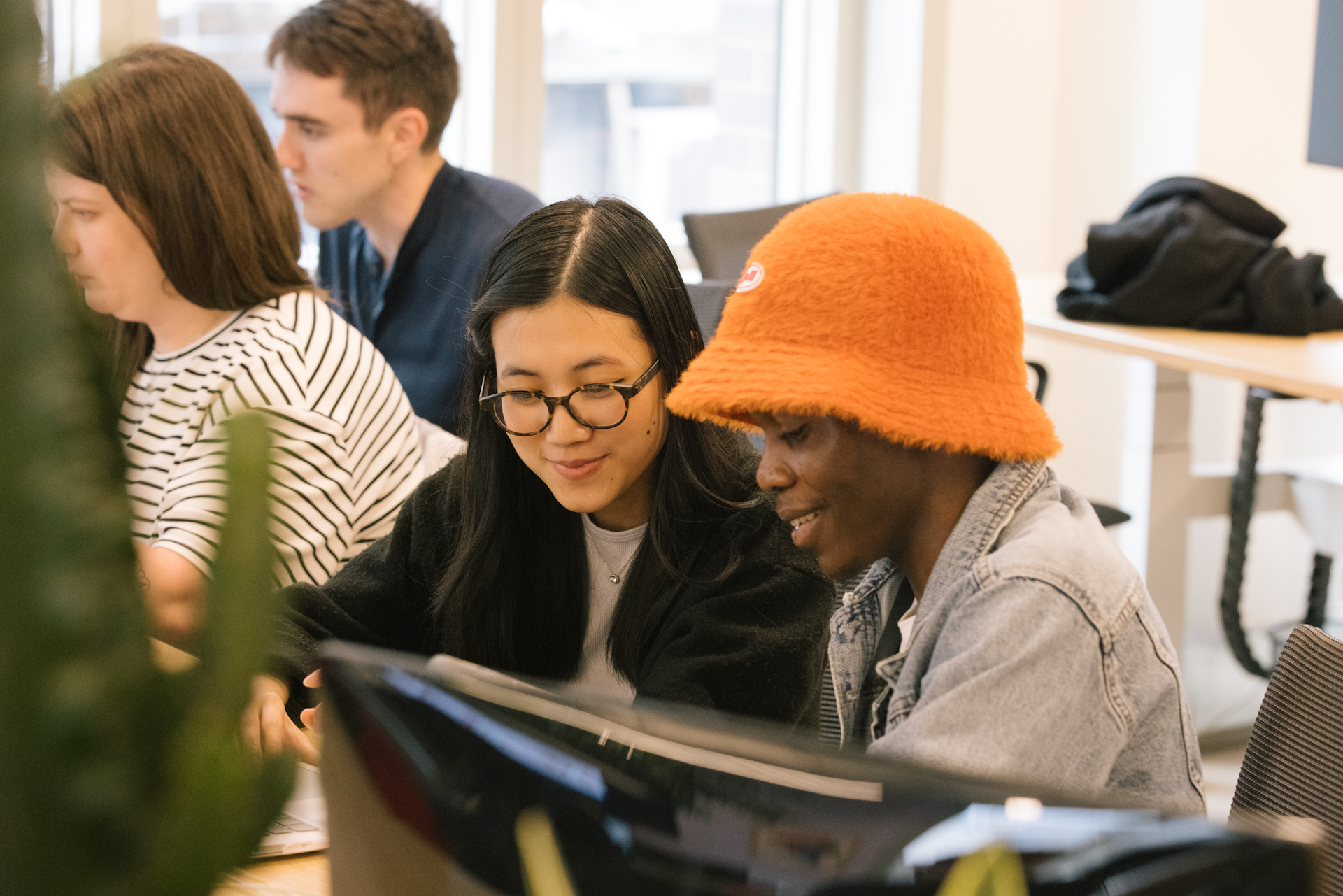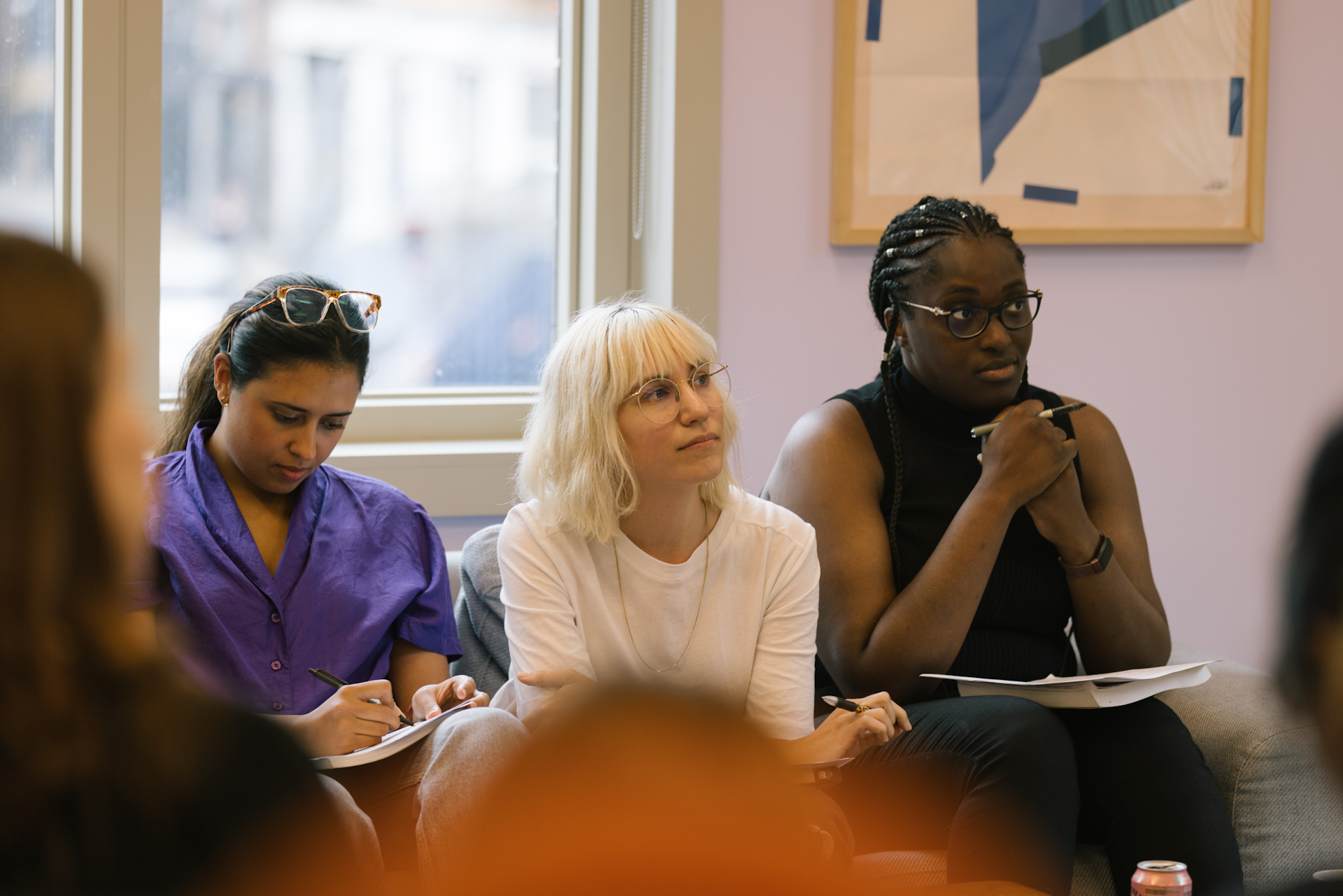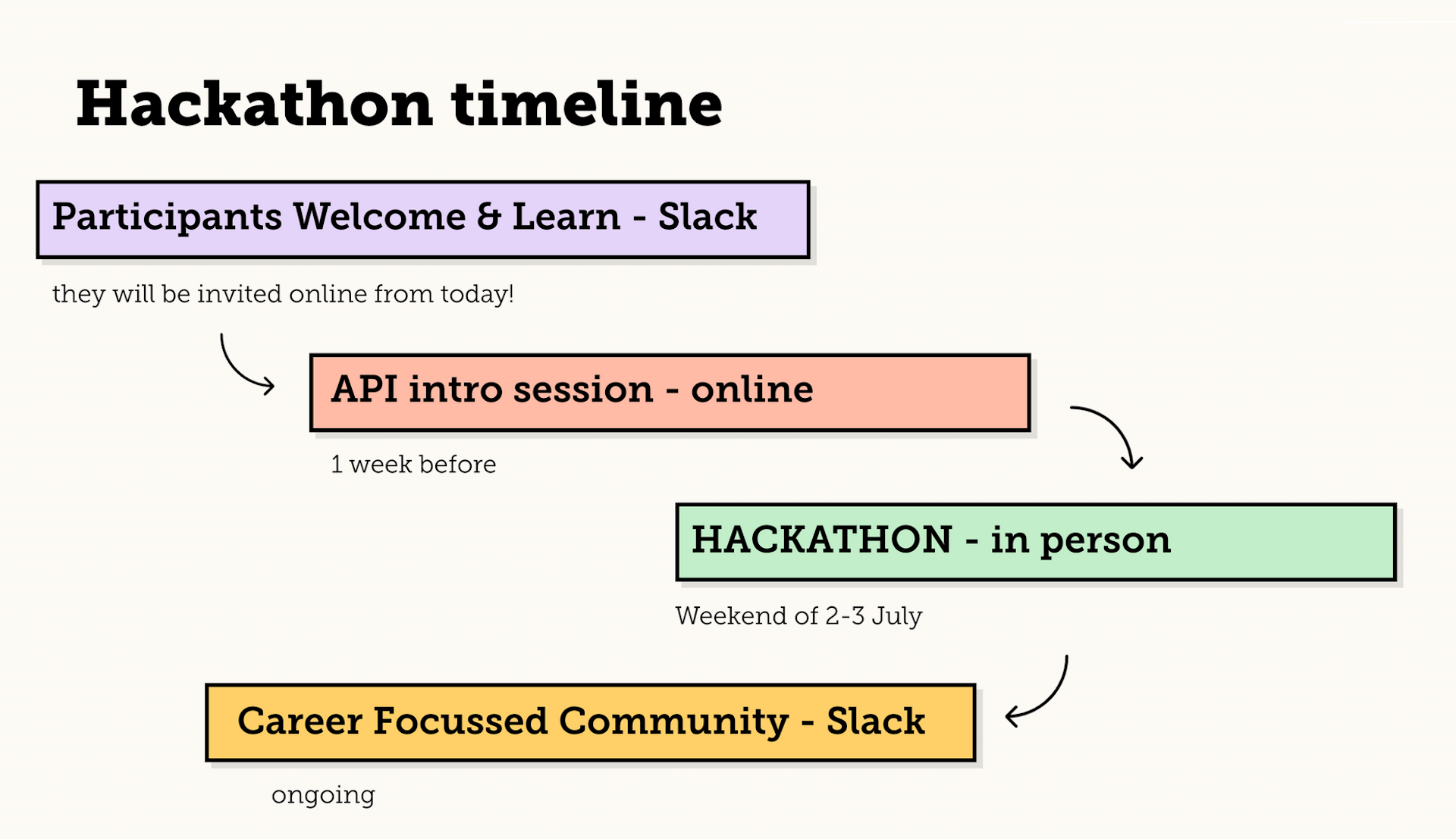How to run an inclusive hackathon
By Kate Westbrook - 5 September 2025
5 Min Read
Before joining Planes as a full stack dev in 2022, I worked in education. Part of my role was running outreach programmes designed to give underrepresented people professional experience to help them progress. So when the idea of a hackathon was floated at a Planes Diversity, Equity and Inclusion meeting, I was super keen to merge my two great loves: tech and teaching.
After volunteering to make the hackathon happen, I began looking at the hurdles that had prevented us from doing it any sooner. One, we’d never run a hackathon before. Two, we didn’t have a network of potential participants. Three, we didn’t have buckets of cash to offer up as prize money.
If you’re a smaller company without a big corporate responsibility (CSR) programme, it turns out there isn’t much advice online. With no playbook to lean on, I decided to approach our hackathon the Planes way; by creating a friendly and inclusive environment that makes tech careers more accessible whilst never losing sight of our sustainability goals. So, if you’re planning on running your own smaller-scale hackathon, here’s how to do it.
Determine who you want to help and how
It’s no secret that tech has a diversity problem. It extends from newbies all the way to the board room. And in order to build brilliant products that work for everyone, we need all kinds of people making tech. So who we create opportunities for is important.
For our 2022 hackathon, we wanted to engage junior devs from underrepresented groups in tech to provide practical experience and a networking opportunity to help them succeed.
To reach people from diverse backgrounds, we tapped into organisations already working with and supporting underrepresented groups. The good people at Ada’s List, Loughborough University, PAZ, School of Code, Code Your Future, Apps For Good and Somalis in Tech not only helped to spread the word through email, social posts and newsletters, but they also provided invaluable feedback and suggestions to help us deliver the best event possible for their communities.

Meet people’s needs
In order to deliver the best, most valuable experience for all your participating devs, you need to understand their needs. To do this, we included questions in the sign-up process about participants' experience level, accessibility needs, dietary requirements and whether they were happy to be photographed on the day. These answers helped us structure the event so that everyone could get the most out of it.
To keep it safe and inclusive, we gave loads of info about the venue ahead of time via an all-encompassing Notion doc (of course). We also had a flexible working option, allowing participants to work from our office or remotely, removing barriers such as sensory difficulties, transport costs and other factors that might make it difficult for participants to attend in person. Finally, we provided a list of safe contacts who participants could talk to if they had any worries or concerns.
Make it a community event
Going to a hackathon as a junior can be super intimidating, so we were keen to build a sense of community where people could connect with like-minded tech folk. Whilst some people came to the hackathon in established groups, those flying solo were put into mixed experience groups so they could learn from each other and build their networks.
We also had people from all aspects of our internal team come along to support. They shared their knowledge and experience through practice-specific presentations to help our participants see things from different perspectives. Not only did this show the participants how important the hackathon was to our entire agency, but it also helped our internal team to practice their mentoring and presentation skills, which we’d been developing through an internal training program in the lead-up.

Create an inclusive and welcoming environment
If you want to make sure that your hackathon is a friendly, welcoming, and safe place to learn and grow, then your participants need to feel supported and included. That requires great communication before and after the event.
Being product folk, we decided to map out the hackathon’s user journey, identifying all the touchpoints that could make for an inclusive experience. One way we achieved this was by creating a dedicated Slack workspace for participants to meet each other, receive updates and access learning resources ahead of the hackathon itself.
When it came to the actual event, after a quick intro to the Planes crew and some housekeeping, we arranged a communal breakfast to get people chatting amongst themselves. We also asked everyone to wear name badges (with specific colours for each team) and ran a team canvas activity to get people thinking about how to work in their groups.
Choose brilliant judges and an inspiring brief
What is your company passionate about? For us, it made sense for our brief to have an environmental lens. And it turns out a lot of junior devs are also pretty excited by green projects too, given the number of applications we received.
So, we asked participants to build a React.js front-end app that pulled data from one of four pre-selected sustainably-focussed APIs. Whilst technically achievable for many junior devs, we also included a range of judging categories for people with different skill sets to shine, including visual impact, green credentials, user experience and best product pitch.
For our judging panel, we sought out a diverse range of people and practices with an inspiring level of expertise. Because for participants to have confidence and trust in the process, they needed to see themselves represented by the senior tech decision-makers. We were lucky to be joined by Kadi Kraman, Director of Engineering at Formidable, Tracy Ngot, CTO at FairHQ, Mariam Bagersh, Senior Product Designer and Co-founder of Fricanduo, Will Tinney, CTO and Co-founder of Greenpixie, Liat Wassershtrom, VP of Product at Plum Guide and Taz Latif, Head of DEI at M&C Saatchi.

Make it a passion project
At its core, digital products are all about users. We build things for people, often building communities along the way. And a hackathon is just an extension of that.
Not only does a hackathon give you the opportunity to nurture talent, but it also allows you to nurture your passions. In my case, that passion is changing the face of tech and empowering really brilliant people through outreach programs.
Use our hackathon framework to help you plan
Find more templates, prompt questions and useful inspiration in the Planes Hackathon Framework in Notion.

If you want to shoot the hackathon breeze or need help mapping your next outreach activity, you can get in touch via kate@planes.studio.